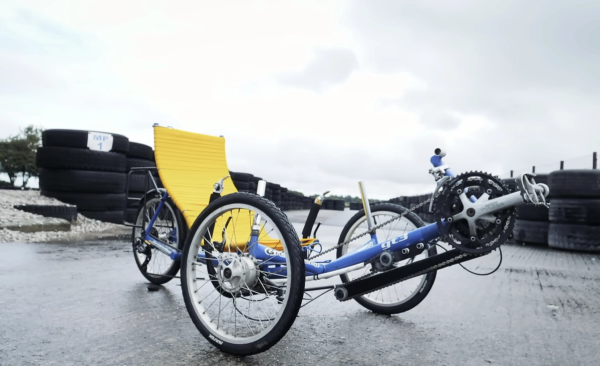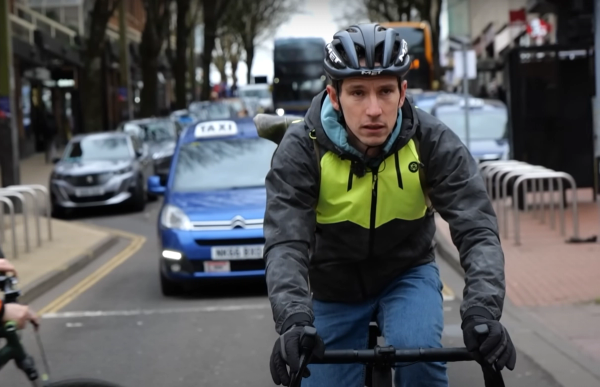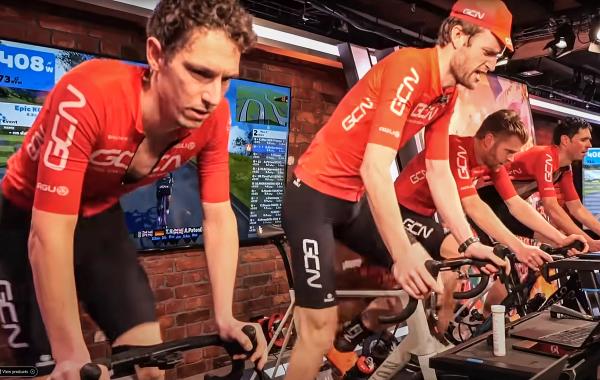Cyclo-cross skills: Getting started with the basics
Conor enlists the help of pro cyclo-cross racer Amy Perryman to find out about cornering, running, bike set-up and more
Alex Hunt
Junior Tech Writer
With the dust settling after a busy road season, you might be forgiven for thinking that marks the end of drop-bar racing until next spring. However, as the dust quickly turns to mud, cycling’s only dedicated winter sport comes out of hibernation.
For the uninitiated, cyclo-cross looks like a mountain bike race, done on the wrong bike, at the wrong time of year. For those in the know, cyclo-cross represents a skills sharpener, which keeps your high-intensity engine revving through the winter so that you arrive in spring laser sharp and dialled in for jumping back on the road - just ask the likes of Mathieu van der Poel, Wout van Aert and Puck Pieterse.
However, the transition from road to cyclo-cross rider isn't easy as it requires a unique set of skills. To find out more and learn what it takes to conquer 'cross, we enlisted the help of pro racer Amy Perryman to learn her top tips.
Green is good, brown is bad

© Velo Collection (TDW) / Getty Images
Green is good, brown is bad. Mud is slippy and the grass will give you a lot more grip and support
The first thing that Perryman points out when getting started with cyclo-cross is: "It has a lot of mud.
"You have got to be able to ride the mud," she goes on to say, "and you’ve got to be able to ride it fast." One of the best ways to get fast at riding mud is to simply avoid it when you can.
Perryman says that it can be useful to remember the mantra, 'green is good and brown is bad'. Essentially, this means any grass that you can find will allow you to roll through faster and give you more grip than going through a deeply rutted muddy section.
Don't be afraid of crashing
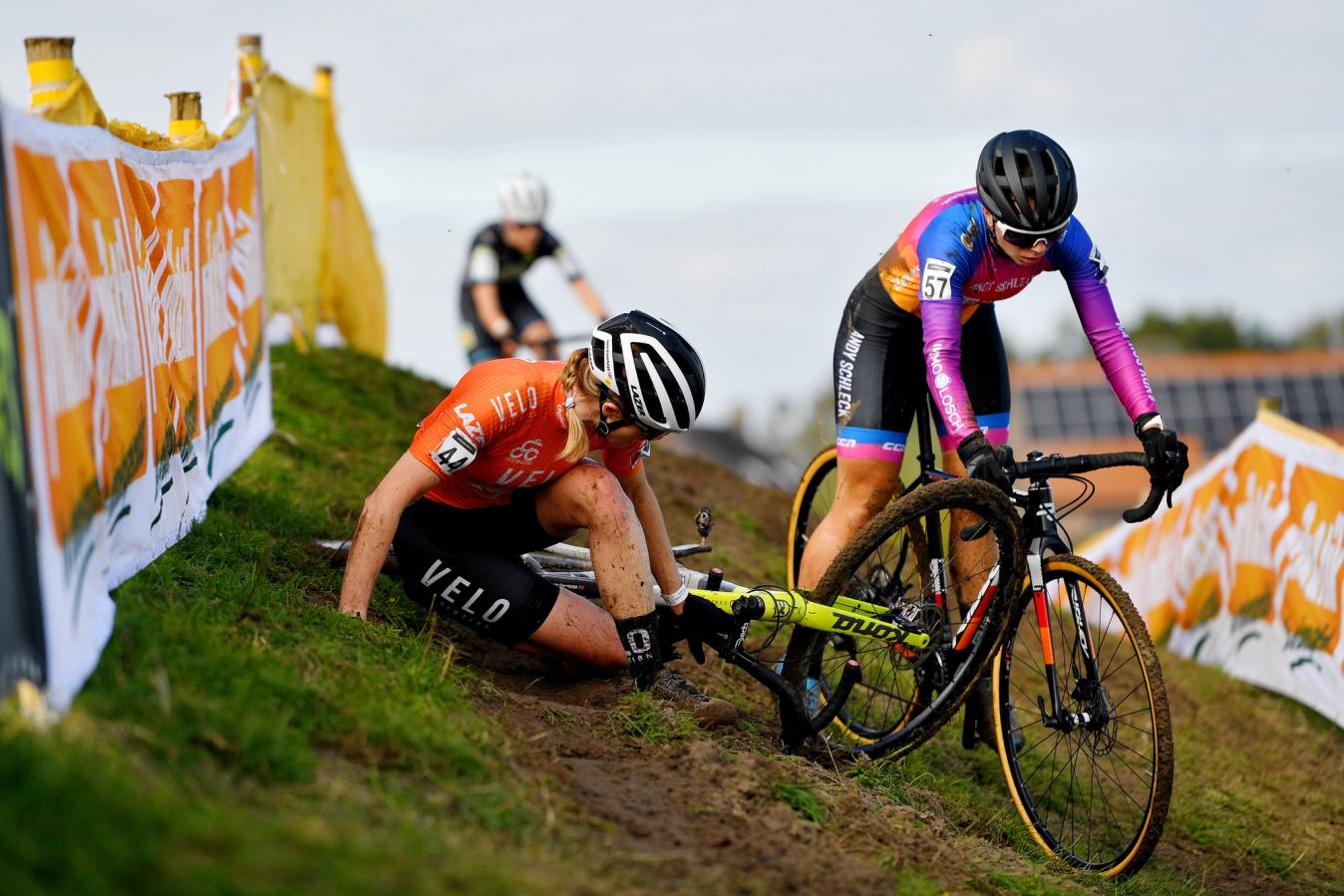
© Velo Collection (TDW) / Getty Images
Crashing on the mud and at slower speeds shouldn't inflict the same levels of fear that a tarmac crash would
If you are a newcomer to riding off-road, especially on a drop-bar bike, it can be intimidating to be riding on loose and slippery surfaces, with the prospect of crashing far more likely than out on the road.
"Crashing is sometimes a good thing," Perryman says. "It means that you are testing the limits of your tyres’ bike handling, which is a crucial element to cyclo-cross racing, as the courses are often technically demanding, meaning that having confidence in your bike and tyres will allow you to push more."
Unfortunately, finding these limits will have you laying on the floor a few times but Perryman adds, "crashing isn’t all that bad and it won't hurt anywhere near as much as on the road."
Think about your bike set-up
Getting your bike set up correctly will give you the easiest platform to get learning. More than on the road, having your bike tuned for the demands of specific conditions will make a noticeable difference. Here are some of the main elements that Perryman suggests focusing on.
Tyres
Bike set-up can be the difference between a course being perfectly rideable or struggling to get anywhere through the mud. For races that are not an open category, using tyres no wider than 33mm is one of the fundamental rules of 'cross.
This leaves a lot of room still for tyre choice, from fast rolling dry tyres to aggressive mud tyres. However, Perryman recommends that, if you are getting stuck into your first race, aggressive mud tyres are the right choice.
.jpeg?w=1348&auto=format)
© GCN
Running a mud tyre is a good choice whilst getting started for the increased confidence it can offer
"They give you the most grip possible," she explains. Although they will have more rolling resistance and won't carry the same speed that a dry tyre will, it will give you the most confidence to throw the bike around and get used to being between the tapes.
- Read more: Complete guide to road cycling tyres
Tyre pressure
Cyclo-cross is also well known for running incredibly low tyre pressures in order to get the most grip out of your tyres. Running anywhere around 25psi is a good benchmark to start from but Perryman suggests that you test out your tyre pressure on the course before the race.
"Depending on if you are running tubeless, tubular or inner tubes you can vary your pressures a little, but you don't want to run it so low that you burp the tyre."
Bottle cages
With cyclo-cross races lasting around an hour, as long as you start well hydrated, there is no pressing need to be drinking during the race. Also, you might find that you simply don’t find time or an appropriate place on course to be able to take a drink.

© GCN
Removing bottle cages will give you more space inside the frame for shouldering the bike over obstacles
Most importantly, you need the space in the frame to fit your shoulder in when carrying the bike, over obstacles or up stairs. Ditching your bottle cages will make it easier to carry your bike and is definitely a performance gain worth considering for cyclo-cross.
Bike choice
Although a dedicated cyclo-cross bike is going to be the best tool for the job, specifically designed for the demands of CX racing, it is absolutely not essential to get started. Local open rounds of cyclo-cross will allow you to rock up and compete on a mountain bike, gravel bike or 'cross bike. Even in other races, that are more strict, so long as you are on a drop-bar bike that complies with the tyre width rules, you should be fine.
Get used to running
Most cyclo-cross courses will have sections that are purposefully unrideable, whether that be with stairs and hurdles, or as courses develop muddy sections. It could even be the need to navigate crashes that result in you needing to jump off the bike and run.
If you have never done this before, it can be quite an overwhelming skill to look at building, as it requires precision and timing to dismount and start running without losing any speed out on the course.
Getting off the bike
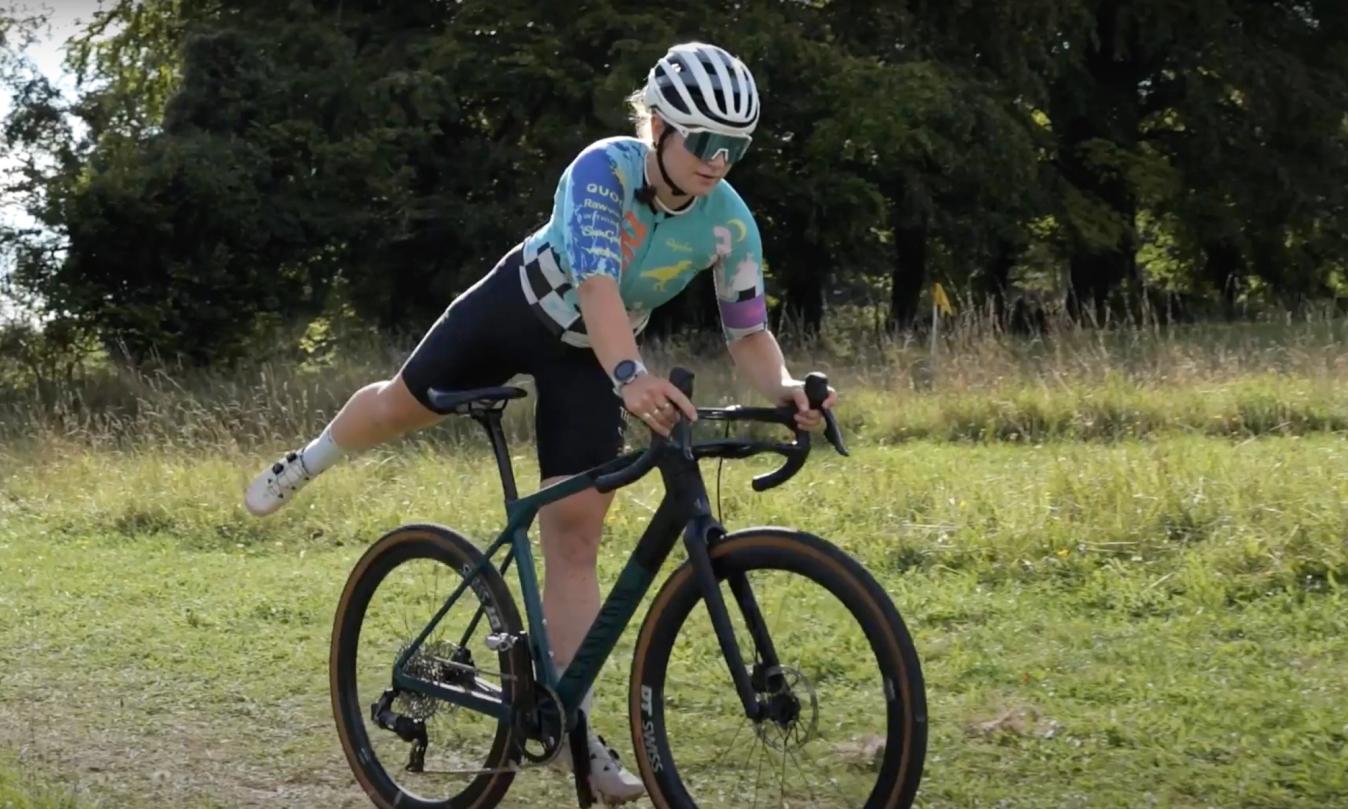
© GCN
Swinging a leg around the back of the bike is the easiest way to get used to a moving dismount
To successfully dismount on the move, the easiest way is to unclip one foot and bring it around the back of the bike bringing it behind your other leg, as you do this and almost land with the unclipped foot, you want to twist your heel out to bring your other foot out of the pedal and then you are free to run. Perryman goes on to say that, "doing this at a faster pace is obviously more tricky, but as you practise it more, the easier it gets."
Carrying the bike
Carrying or ‘shouldering’ the bike is the best way to travel with your bike when you are running as it keeps it close to you and allows you to run easier and be more manoeuvrable. With your arm nearest to your frame, you want to grade the top tube as far back as you can, ideally with an underhand grip before lifting your bike up onto your shoulder, resting the junction between your top tube and seatpost on your shoulder.
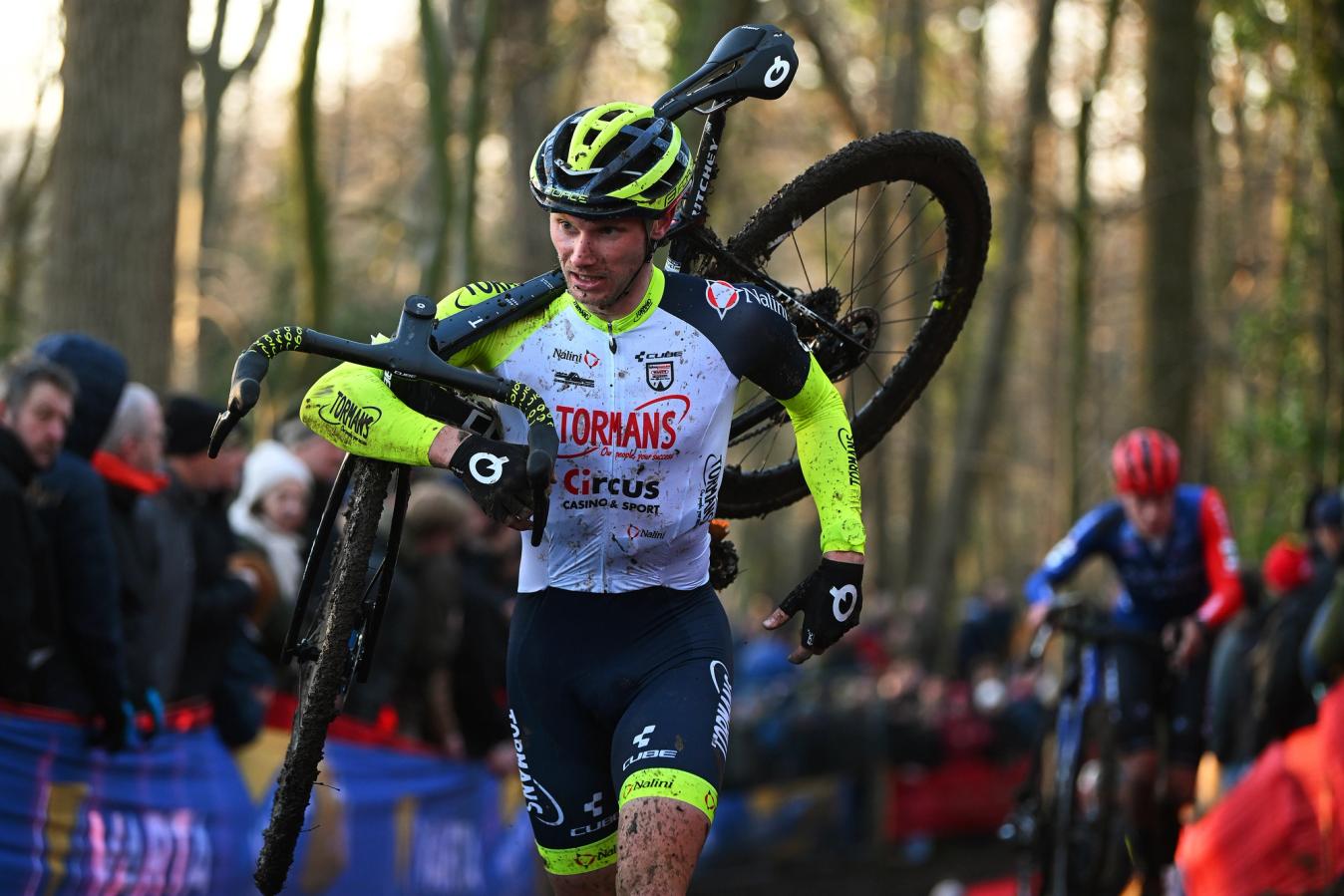
© Velo Collection (TDW) / Getty Images
Placing the bike on your shoulder and holding the bars is a secure way to run whilst carrying the bike
Perryman's tip for making this secure for running is to take your arm and wrap it under your down tube and then place a firm grip on the bar closest to your opposite side.
"You are locked in tight, there is no swaying around, you’ve got full control of your bike," she explains.
Once you have that mastered then simply reverse the order to place the bike back on the ground, with an emphasis on not slamming the bike back down, but placing it gently on the floor again.
Getting back on the bike
To successfully remount the bike once it is back on the ground can be tricky - "especially at speed" Perryman adds - but start off at a walking pace and get used to swinging your leg around the back of the bike and sliding on to the saddle. At first it is beneficial to not jump on to the bike but place yourself back in the saddle.
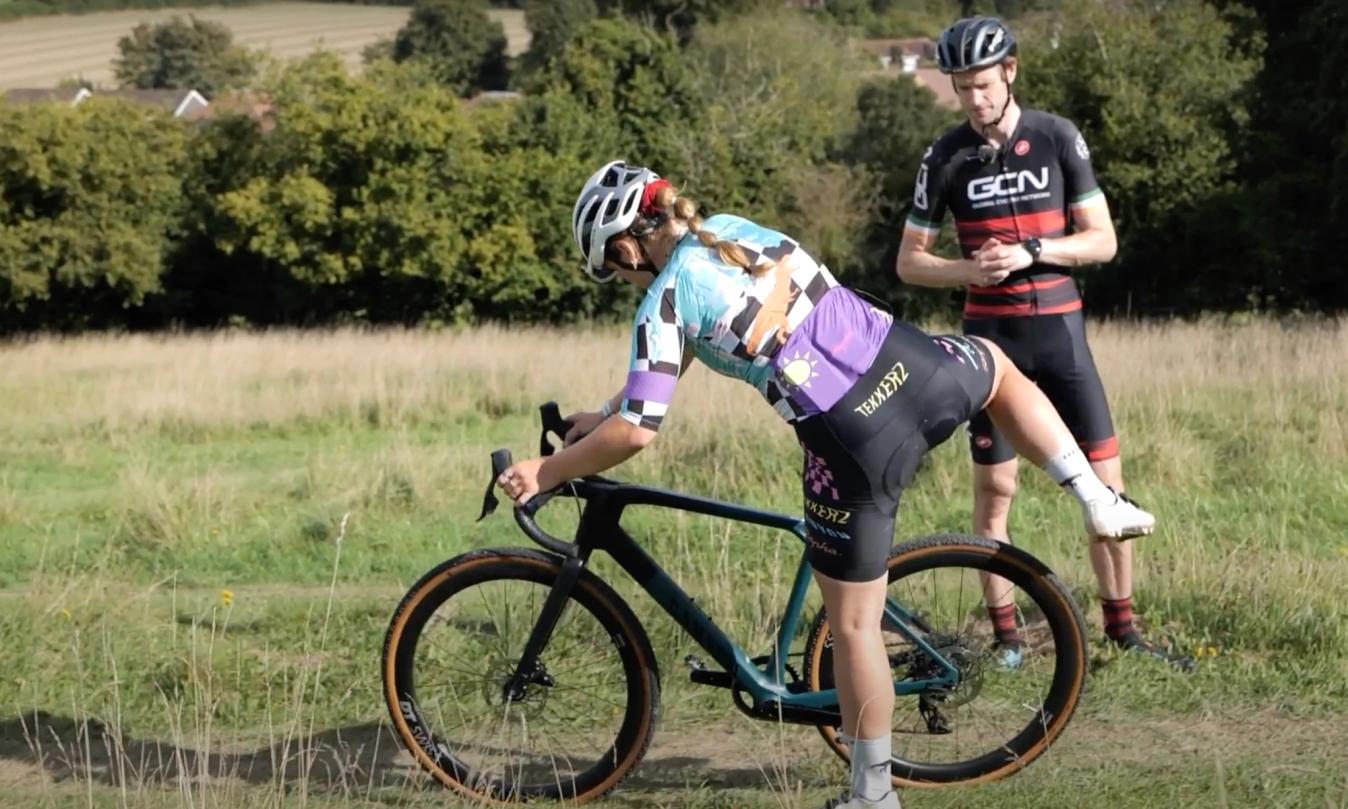
© GCN
Sliding on to your saddle without jumping is the best way to get familiar with remounting the bike
Over time and as you practise this skill more and more it will become more refined and you will feel more confident in remounting at a faster pace. The hardest part especially in a muddy cyclo-cross race can be getting clipped back into the pedals. You want to aim to get this done immediately, but if you need to, drag your shoes backwards on the pedals which can help clear the worst of the mud around the cleats.
Study your cornering
For those starting out with off-road skills, cornering is one of the most challenging ones to master. No two corners are the same, and even in a race the same corner will evolve and change, meaning every time you tip the bike into a corner there is very little in the way of predictability.
The first tip Perryman has comes back to looking for the green sections of the corner. "You want to take a fairly green line, a muddy course is going to be slippery," she explains.
Finding grip is the first and most important part of successful cornering.
.jpeg?w=1348&auto=format)
© GCN
Finding 'green' sections through a corner are where more grip will be but corners will change throughout a race
The next tip from Amy is to try and keep those pedals turning throughout the corner, keeping that momentum which becomes more and more important the muddier a race becomes. She also advises, "less square pedalling [through corners] as you want to keep it really smooth and then as you get to the exit you can really whack it."
When it comes to exiting a corner successfully in a cyclo-cross race, you want to accelerate back up to speed out of the saddle. The punchy nature of a cyclo-cross race means you want to attack whenever you can to get that average speed back up. Cyclo-cross is very staccato in its demands, making for full gas racing for the full hour.
Prepare for a fast start
Cyclo-cross races have a mass standing start with more serious races being gridded - riders receive a start position based on previous results. Getting a good start can be pivotal to the rest of the race as it can allow you to get to the front and out of harm's way if done well.
Gearing
When you line up for the start of the race ensure that you are in the correct gear to get you up to speed with the minimal amount of gear changes. When putting in a maximum effort at the start, every gear change increases the risk of snapping or dropping a chain.

© GCN
Finding a gear that is going to give you a strong start is a worthwhile investment in time
Being in a gear that will allow you to get up to speed but without being over-geared is what you are looking for. Spending some time practising starts will help you workout what the right sort of gear is for you. This can then be tailored depending on the course or conditions to better suit.
Pedal position
Getting your second foot clipped in during a start is important to get all of your horsepower down out of the start. One small but important tip Perryman recommends is to purposefully place your pedal in a flat position with the mechanism facing up when you crank it at the nine o’clock position. This makes getting that foot clipped in that little bit easier.
Starting with your weaker leg
Perryman’s final tip for getting a good start is to use your weaker leg as your starting leg. For a lot of us this might feel odd and unnatural but there is logic behind this technique. When you start, the first power stroke on the pedal is only half a revolution because you are starting with your cranks level, the second pedal stroke is then the really powerful one as it uses the full revolution to produce the power.
By starting with your weaker leg, that then allows your stronger leg to be used for the first full pedal revolution that will give you more power and a bigger punch to get you up to speed. Although this is something that might feel odd, after some practice, it can start to feel a lot more natural.
Watch the best of the cyclo-cross season live on GCN+, including the World Cup, Superprestige, X2O & Exact series plus the UCI World Championships, with replays available on demand. Territory restrictions apply, check availability here.
Latest Videos
1Why VO2 Max Is The GREATEST Predictor Of Lifespan | Dan's Journey Back to Health and Fitness (Pt. 2)

2The Hottest Bikes & Pro Tech Of The Giro d'Italia 2024

3Your Bike WILL Get Stolen, Unless You Do This! GCN Tech Show 331

46 Bikepacking Essentials You DON'T Want To Forget!

5The Big GCN Giro d’Italia 2024 Preview Show!





